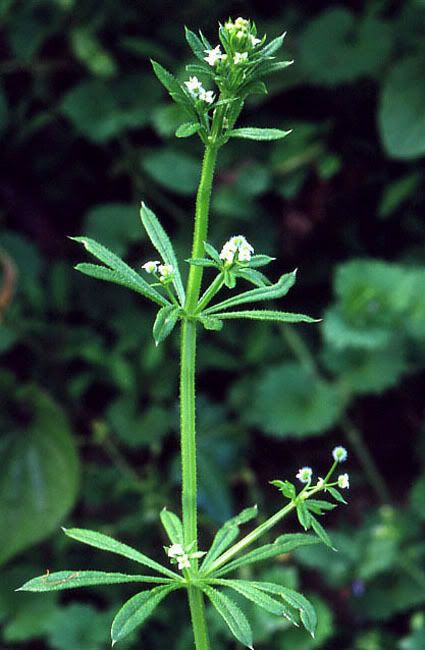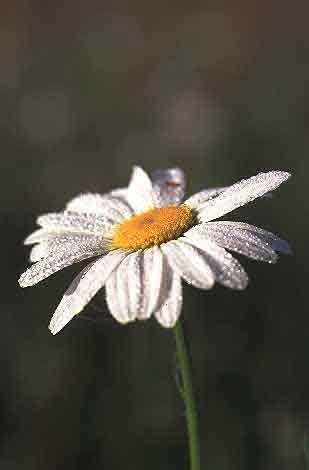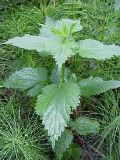From the time of the Greek physician Galen in the second century and into the seventeenth, it was commonly believed the blood became stagnant after a cold winter, and that indoor air affected one’s temperament and brought about melancholy, as per the four humours (blood/sanguine, phlegm/apathetic, black bile/depressive, and yellow bile/ choleric). The idea still seems to hold water if you consider all the fluorescent lights and vitamin D lamps for sale throughout the northeast in wintertime.
How does one clean the blood? The process is very simple; it’s been done for centuries in England and the United States, and it’s a tradition in which everyone can participate: young and old, healthy or infirm, Islander or landlubber. The antidote to the melancholy after months of snow, cold, and dismal darkness is eating greens.
The greens are bitter, but that’s the point. They are stomachic, meaning they improve digestion, which is the whole essence behind purifying the blood. The ancient folk belief says that the blood is not dirty, rather the liver and the lymphatic system accumulate toxins from processing rich, heavy foods during cold winter months, and eating bitter greens helps to expel them.
Here are ten wild plants to be on the lookout for this spring.But please research them so that you know beyond doubt what you are picking.There are look a likes.
Cleavers

Cleavers (Galium aparine) is an herb that grows in dense mats on long spindly stalks, often knee-high or higher in rich soil. The hairy stalks are dotted with axils of tiny leaves, like crowns, every few inches up the length. (It resembles sweet woodruff, which is shorter and not edible: In fact, sweet woodruff is considered by the FDA as safe only when used in alcoholic beverages, and large doses are toxic.) Adorning each whirl of cleavers leaves is a tiny white flower. The plant is also commonly called lady’s bedstraw, because the hairy stalks cling to each other – and to your clothes – giving the plant a sticky feeling. American colonists would mat the stalks together to stuff their mattresses for cushioning. Medicinally, cleavers have been used in traditional herbalism to improve the health of the lymphatic system and to treat numerous ailments. Look for cleavers in shady rich woods or in the cool areas of your garden, often growing up rock walls or fences. Harvest the entire stalk: Snipped into pieces, it can be eaten raw in salads, or steamed (as you would steam turnip greens) with vinegar, making it a tasty vegetable.
Dandelion

This plant is a veritable medicine chest and food pantry in itself. Dandelion (Taraxacum vulgare) is familiar to many of us with its bright yellow flower and deeply toothed leaves, which gave it the name lion’s tooth, or dent de lion in French. Whether you like it or not, many a lawn has dandelions. The plant is easy to identify even when it’s not in flower because of the leaf shape and the fact that dandelion leaves and stalks have no hair; chicory, which is also edible, has similar leaves but has tiny hairs all along it. Spring is the best time to gather young dandelion leaves, which are high in vitamin A, ascorbic acid, potassium, and calcium, and are considered a valuable diuretic. Eaten raw, they provide a pleasant bitter contrast to sweet spring lettuces; or steamed, they make a wonderful bitter. With your evening meal, try lightly steaming them with ginger slices and tamari or soy sauce; or in the fall, harvest the roots, which are high in iron and can be saut éed, stir-fried, or steeped in vinegar for a salad dressing.
quick recipe: Steamed dandelion leaf salad
Gather a basketful (or a gallon bag full) of dandelion greens, rinse them, and lightly steam them in the water that clings to them (only for a few seconds). Remove from heat and add a handful of dried cranberries, crumbled feta cheese, pine nuts, and a sprinkling of olive oil and vinegar. Mix well and serve with crusty garlic bread, local roasted chicken, and elderberry wine.
Garlic

The many species of the onion family include onions, chives, and garlic (Allium sativum). While garlic is not a common wild plant on the Vineyard, you may find clumps of it, or of escaped cultivated garlic, growing anywhere the soil is rich and the trees offer shade and protection. Both wild and cultivated garlic are high in minerals such as magnesium, iron, manganese, and sulfur, and have traditionally been used in the diet to regulate cholesterol levels. Even in somewhat acid soils, like under our scrubby oak trees, you’ll find clumps of these alliums sending up their tall stiff leaves that resemble spears. If you dig, you’ll discover tiny bulbs, often not as big as what you see at the store, but these are edible and delicious. When the plant flowers, it sends forth balls of buds that open haphazardly and give the plant a fire-cracker look. The buds that form prior to the flowers opening are edible and can be snipped off for a salad or stir-fry , and the flowers – usually white, purple, pink, or red – are edible and offer a nice zing to the same dishes.
Japanese Knotweed

This introduced species is often considered a pest and is eradicated from many yards, but it is actually quite lovely to look at with flowers that hang in clusters, giving it an ethereal, cloud-like appearance – and it’s useful as food. Instead of simply eradicating it, consider pulling up all the shoots in the early spring to make “asparagus” omelets. This would certainly be less intensive and more flavorful than spraying them with herbicide. If you don’t know where your neighborhood patch of knotweed (Polygonum cuspidatum) is, watch for it this summer: The whole plant can grow into a bush six feet tall, and the broad heart-shaped leaves are smooth and bright, just like pokeweed’s. But instead of growing upright on a trunk, it sends out leaning and creeping stems punctuated with cream-colored flowers at the base of each leaf. Because it contains resveratrol – the same substance touted for making wine a heart-healthy drink – eating Japanese knotweed may help protect against heart attacks, and it is also being studied for its effects against Lyme disease. Harvest the stalk of the plant and cook as you would asparagus or rhubarb. Slightly tart, the young stalks (after they’ve grown slightly beyond the shoot stage) taste similar to rhubarb.
Mustard

If you want a spicy kick in the springtime, harvest some mustard leaves. Each flower of this Brassica plant is a tiny, yellow cross, and these sunny mustards can quickly overtake a fallow field. Several varieties grow on the Island, including field mustard (B. rapa) and black mustard (B. nigra). The leaves are serrated, deeply lobed, and can be a purplish color. Mustard plants have slightly prickly under-leaves and stems. Look for them in meadows, abandoned gardens, and waste places that receive ample sun. The early spring leaves can be eaten raw in salads for a mild peppery flavor (reminiscent of arugula), but as summer progresses the flavor grows sharper. To remove excess bitterness, be sure to boil in changes of water: Bring water to a boil, submerge the leaves and let them boil for three to five minutes, then drain and repeat the process with a pot of fresh water. Rinse after the final boiling. Mustard greens can also be sautéed and may be cooked with bacon or pork for a satisfying Southern-style meal. You can make your own homemade mustard by grinding the tiny mustard seeds and mixing them with water, vinegar, salt, and pepper.
Poke weed

This is one of the loveliest plants, but is poisonous by the end of the season when it sports a thick crimson trunk that towers overhead and droops bouquets of scarlet berries from above. For a few weeks in early spring though, the young tender shoots can be eaten like asparagus – only until they are no bigger than the width of a finger. Phytolacca Americana can be found in rich soil near gardens and woodland edges and can grow up to ten feet tall, with a trunk that is as thick as your forearm, and leaves that are a smooth, bright green. Look for the young shoots to emerge from last year’s root stalks. Both the roots and shoots will have the characteristic scarlet-tinged coloring and resemble fat asparagus, but the root is always poisonous. Later in the season, poke produces berries with small white flowers that hang in clusters like grapes. The seeds inside the berry are toxic and should not be eaten. However, the new one- to two-inch leaves are nutritious and fine throughout the growing season, and especially in the spring, in an old folk dish called poke sallet, in which they are boiled in several changes of water, then sprinkled with vinegar, and served with cubed pork if desired.
Oxeye Daisy

Oxeye daisy (Chrysanthemum leucanthemum) is the common daisy with white petals and a yellow center that blooms in springtime. Daisies are at their tastiest before the flowers blossom: The unopened buds and greens are edible and delicious. Oxeye daisies can be found in yards and open, grassy areas, and alongside gardens and roads. The leaves look small and frilly, a cross between miniature arugula leaves and fris ée lettuce. The taste is milder than arugula, but with a flavor described as “sweet, succulent and slightly spicy” by Russ Cohen in his book Wild Plants I Have Knownand Eaten (Essex County Greenbelt Association, 2004). Pinch the leaves free and add them to a salad along with other leafy green spring edibles like watercress, wild mustard, dandelion greens, and sea rocket.
Sea rocket

As the name implies, American sea rocket can be found while walking the beach, especially along the Island’s north shore, at the edge of grassy areas. Growing six- to twelve-inches high, this native plant (Cakile edentula) belonging to the mustard family has delicate (usually yellow) flowers and oval, succulent, green leaves with slightly wavy, blunted edges. All of it is edible, and quite nutritious with calcium, beta-carotene, and folate. Another rocket, commonly called arugula, gives us a hint of the taste of this wild edible, sometimes referred to as sea kale. The leaves taste similar to arugula with that characteristic spicy, horseradish flavor that may intensify later in the season. Sea rocket adds zip to your sandwich or salad. Just pinch off the leaves, wash, and toss with milder salad greens, or chop and use to garnish seafood. After a late-summer bloom, seed pods form and these can be picked and ground into mustard.
Stinging nettle

One of the most nutritious so-called weeds, stinging nettle (Urtica dioica) has a reputation for leaving painful welts on the skin. It’s true, if you brush against one of the one- to three-foot, pale green stems or its serrated, deeply toothed leaves, the plant will inject you with a tiny amount of formic acid, and it will sting. Rather deceiving, with its small, pretty, pale green flowers hanging like little garlands, nettle is covered with tiny hollow hairs, so you must wear gloves to harvest it. As seventeenth-century English physician Nicholas Culpeper said, “Nettles are so well known that they need no description. They may be found, by feeling, in the darkest night.” Look in the very rich, shady woods, near vernal springs, or on the farm where you used to keep compost, and don’t let the sting keep you from this nourishing plant. Nettles can be brewed into a tea that is rich in cobalt, iron, phosphorus, potassium, zinc, and B vitamins; nettle tea can also be used as a hair rinse and strengthener, or to water your plants. Nettle is also a superb potherb, meaning it can be used as a vegetable, and it can be grown in a pot on your kitchen windowsill for regular meals. Put nettle leaves in soups (the sting disappears when cooked), casseroles, or anywhere you would use spinach.
Watercress

In the same family as mustard, watercress (Nasturtium officinale) is one of the most popular wild foods available, and its long growing season (flowering from April to October) makes it easy to find and harvest. As the common name suggests, watercress loves water: It often grows in dense spongy patches on the surface of springs and creeks, its succulent, spicy leaves floating on the rippling waters under shady trees. The small, dark green, oval leaves have rounded edges, and tiny tufts of white, four-petaled flowers grow at the end of firm yet tender stems. Snap off the peppery tasting leaves (and the flowers, if desired) and add to salads or soups, or use like chives. This plant provides vitamins A and C and was traditionally used in the treatment of scurvy and tuberculosis. Best eaten raw, it offers a wonderful, pungent taste to counteract sweet lettuces in salads.
I will talk about the medicinal properties of these ten wild plants in a later blog.